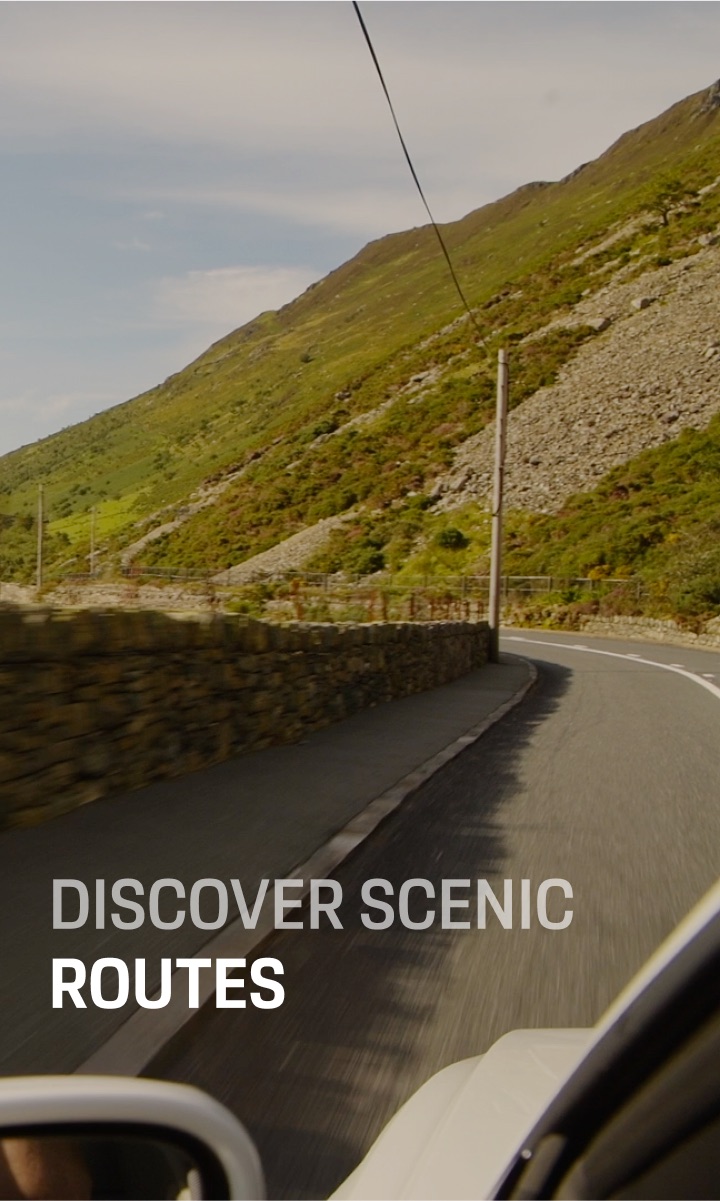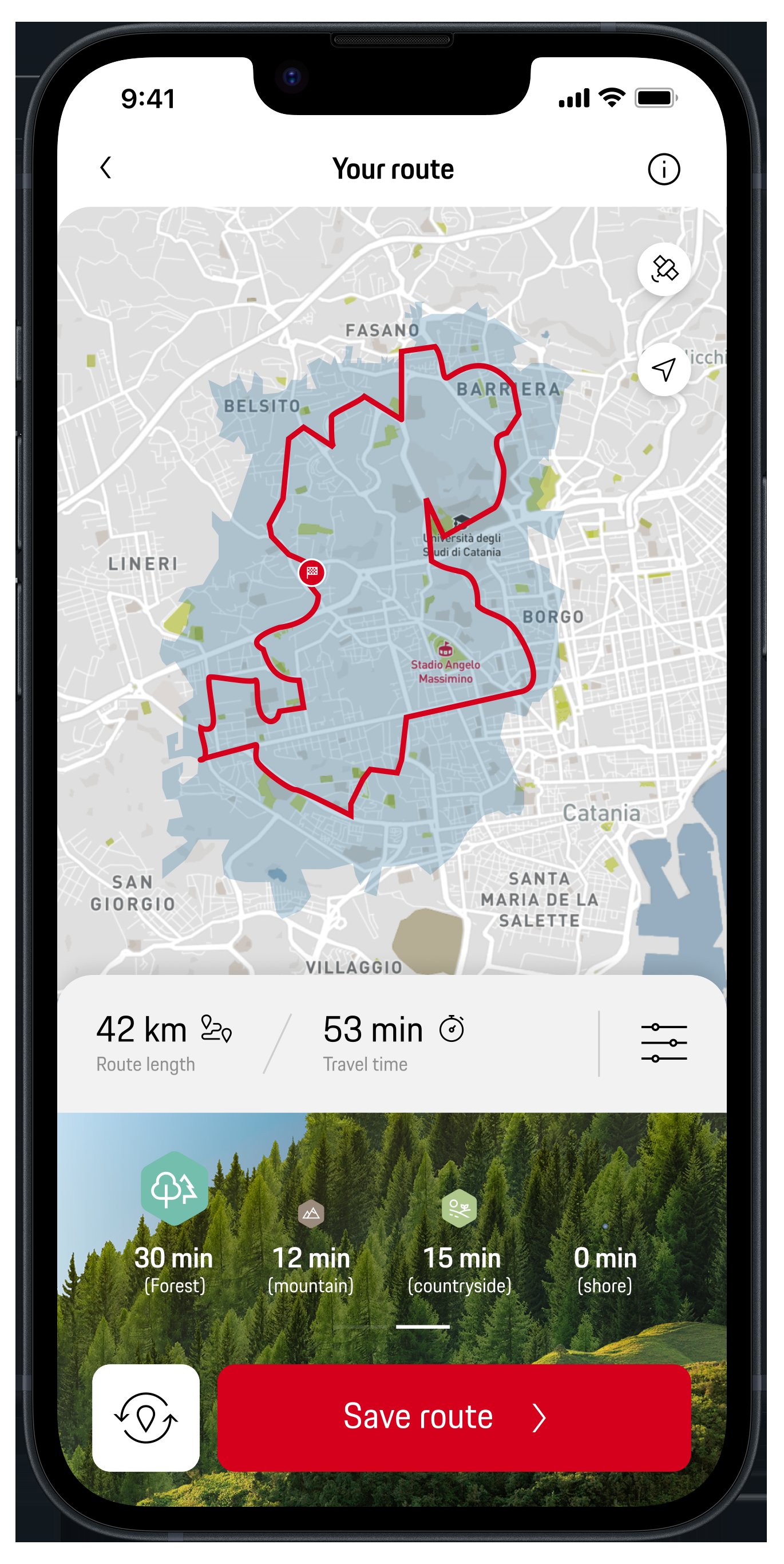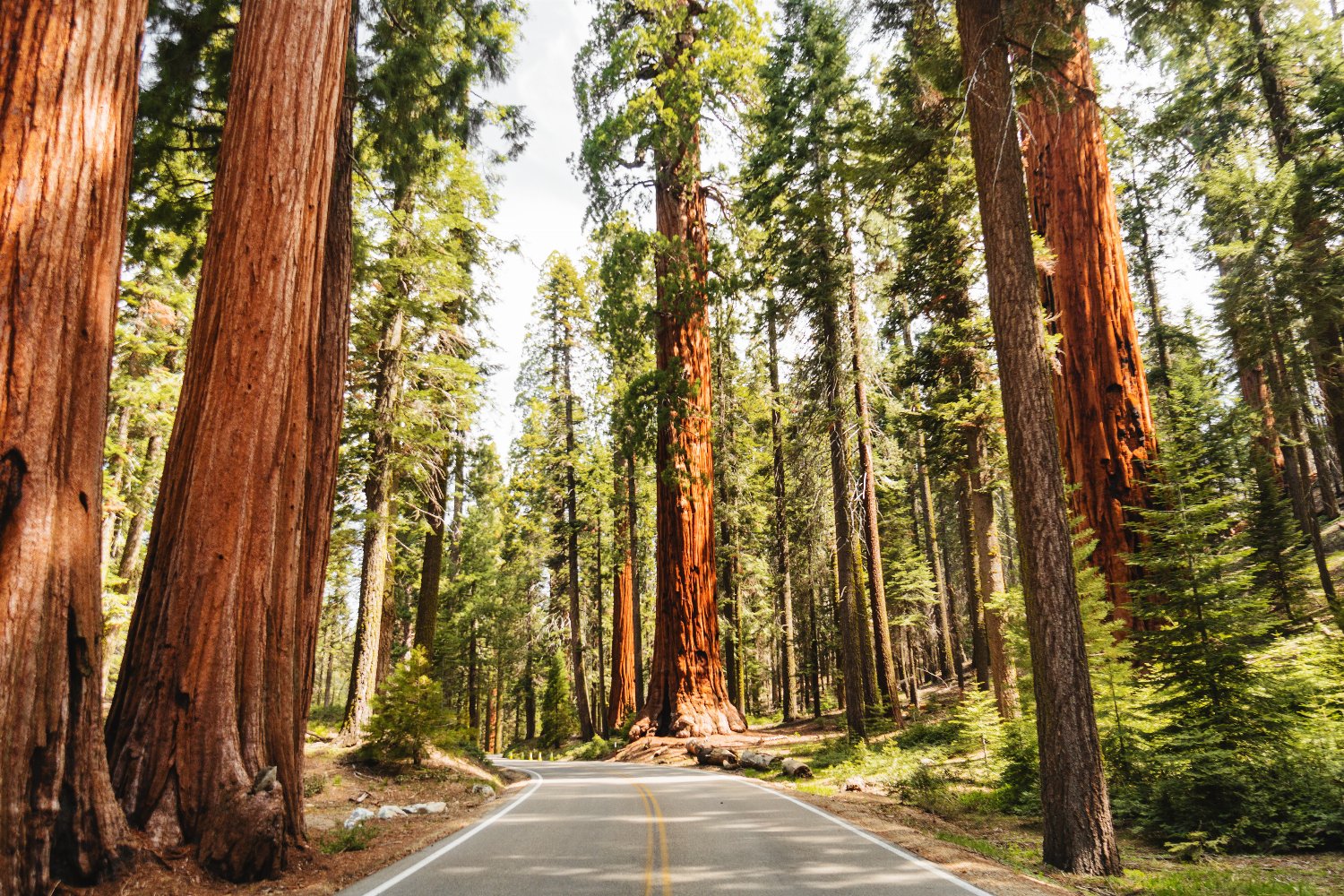
Redwood National Park: Forest of Titans
Wander Among Some of the World’s Tallest Coast Redwoods in Redwood Park
The Jurassic period was an age of giants – a time when dinosaurs shook the earth with their footsteps. While they may be long gone, some titans from the era remain: The mighty sequoia of the Redwood National Park. Known commonly as redwoods, these colossal trees form a storybook forest along roughly 40-miles (65-kilometers) of wild California coastline. In this natural haven – where elk and bear roam, and whales breach the waters below – life slows down. Peace and tranquility reign in one of the most iconic California national parks.
Nature’s Skyscraper: The Coast Redwood
Located on California’s pacific coastline, near the border with Oregon, the Redwood National Park was officially established in 1968, and was later designated UNESCO World Heritage Status in 1980. Made up of 40,000 acres (160 square kilometers) of ancient redwood, the primeval woodland contains over 75 miles (120 kilometers) of winding trails where you can hike back in time.
The deep coniferous forest contains three types of redwood: The giant sequoia, dawn redwood, and coast redwood. Roughly 200 to 50 million years ago, such trees would have been widespread and abundant globally. They have since become a rarity – listed as endangered, their numbers are declining.
The redwoods are undeniably charismatic, striking awe in those that walk beneath their boughs. They can easily grow over 300 feet (90 meters), making them the tallest trees in the world by a stretch. Some of these venerable giants are over 2000 years old, with trunk diameters of over 19 feet (6 meters). While the redwoods here are true titans, the largest in the world live in Kings Canyon National Park and Sequoia National Park in eastern California.
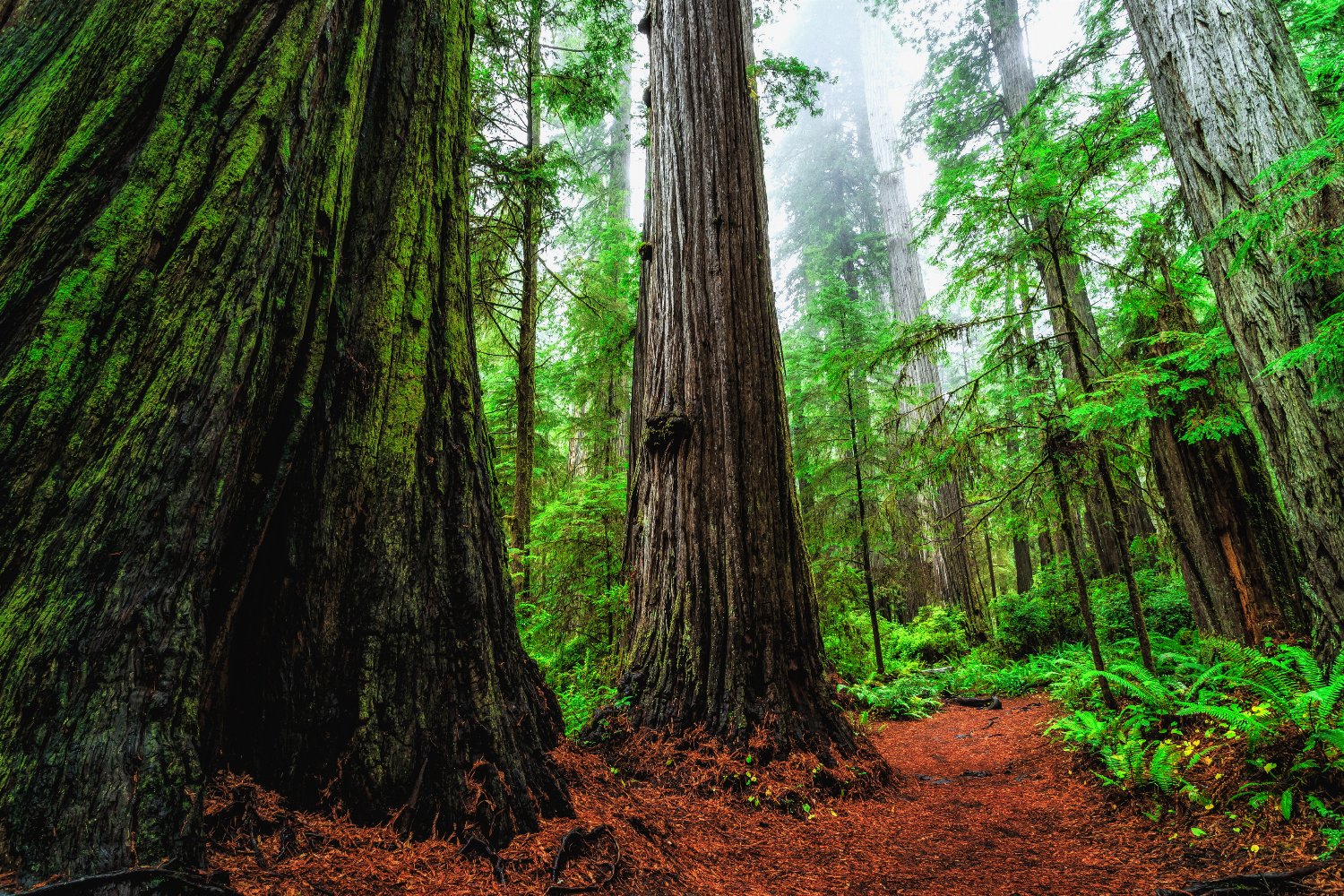
Golden Groves of the Redwood National Park
While you can’t really go wrong on any of the myriad trails in the Redwood National Park, there are several standout spots that are justifiably famous for their beauty and grandeur:
- Stout Grove: One of the most photographed sets of sequoia, this is the place that springs to mind when you think of the spectacular Californian redwoods.
- Jedediah Smith Redwoods: Named for the celebrated frontiersman and explorer, there’s great views and access to the stunning Smith River.
- Lady Bird Johnson Grove: Home to truly ancient, old-growth trees. Come early to catch the morning mists or later to see the last rays illuminate the forest.
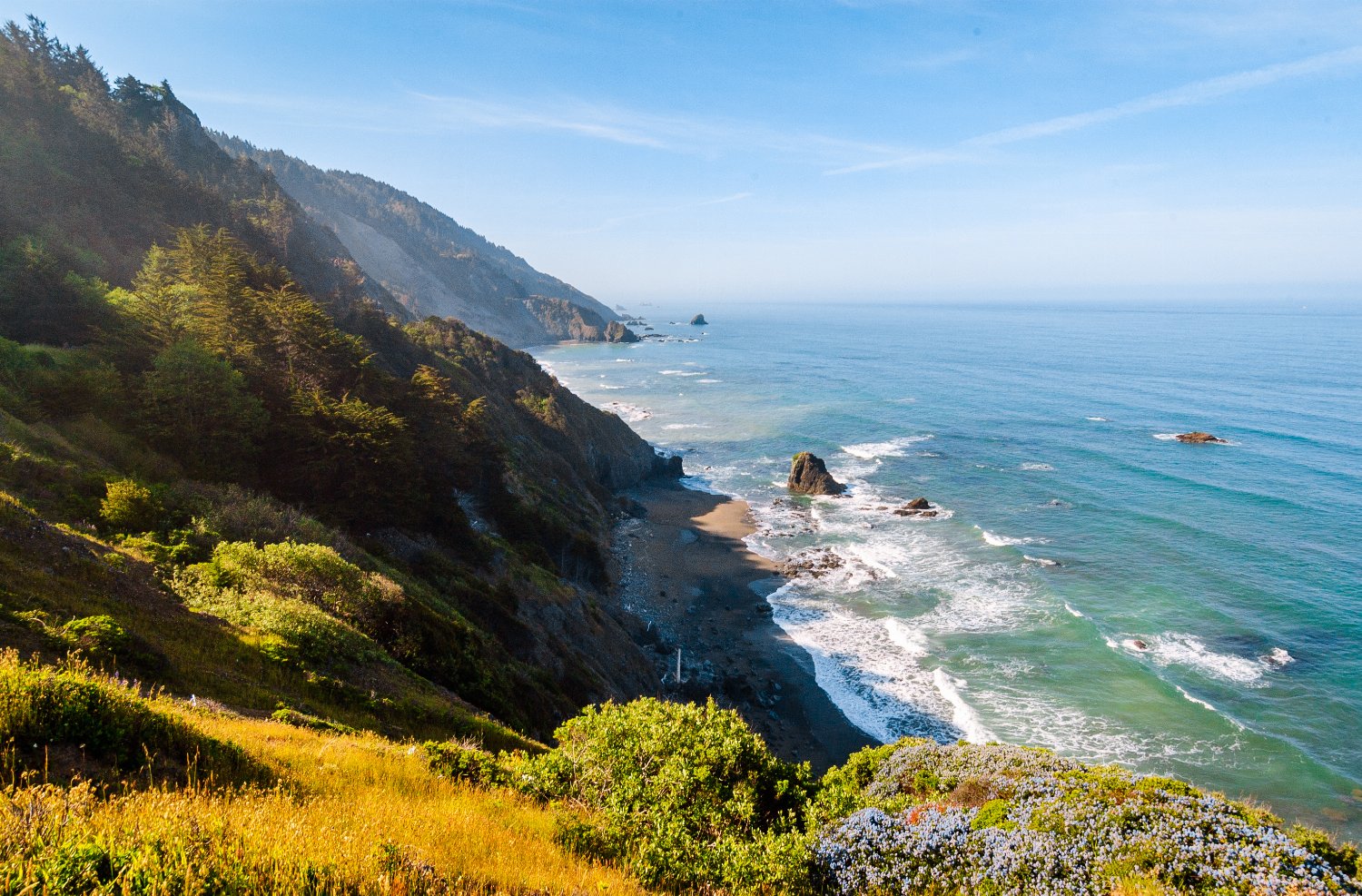
Rugged Redwood Park Drives
The best way to access the above-mentioned spots, and some of the more remote parts of the Redwood National Park, is to drive. The Coastal Drive Loop is a roughly 45-minute round trip packed with dramatic scenery. The roads are narrow and steep, and the curves sharp. Meanwhile, there’s panoramic views over the ocean, look out for whales, sea lions and pelicans – and the Klamath River. Park up at the High Bluff Overlook for the pick of the views over the rugged coastline. You can also visit a former World War II radar station – disguised in the 1940s to look like a farmhouse and barn.
Bald Hills Road, a little further south and running inland, also takes around 45 minutes to drive to, and gives access to the Lady Bird Johnson and Tall Tree Groves. The drive passes through some pristine prairies – alive with spring wildflowers, and roamed by elk and black bear. A few miles east of the Lady Bird Johnson Grove, Redwood Creek Overlook offers commanding vistas over the old-growth redwoods and boasts some ridiculous sunset views. From School House Peak, the summit up at 3100 feet (950 meters), there are also great views of the wildflower meadows below during the day and the starry skies above at night.

